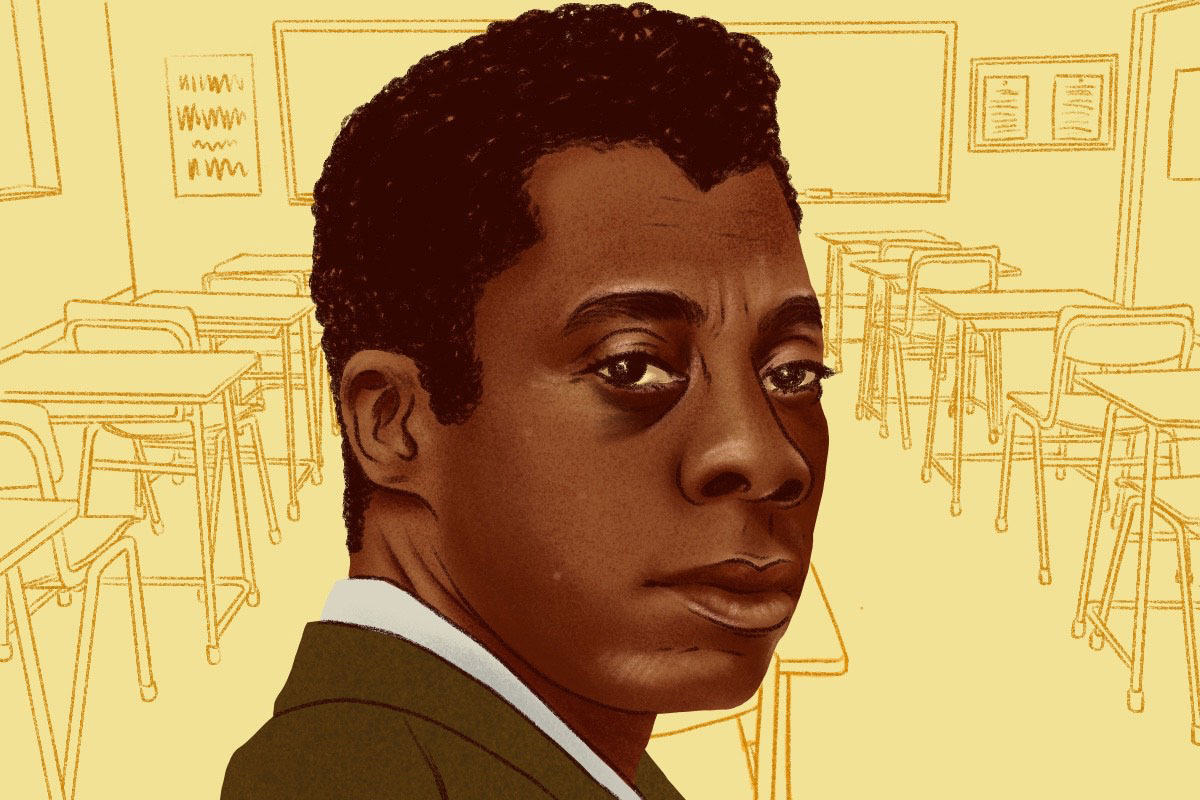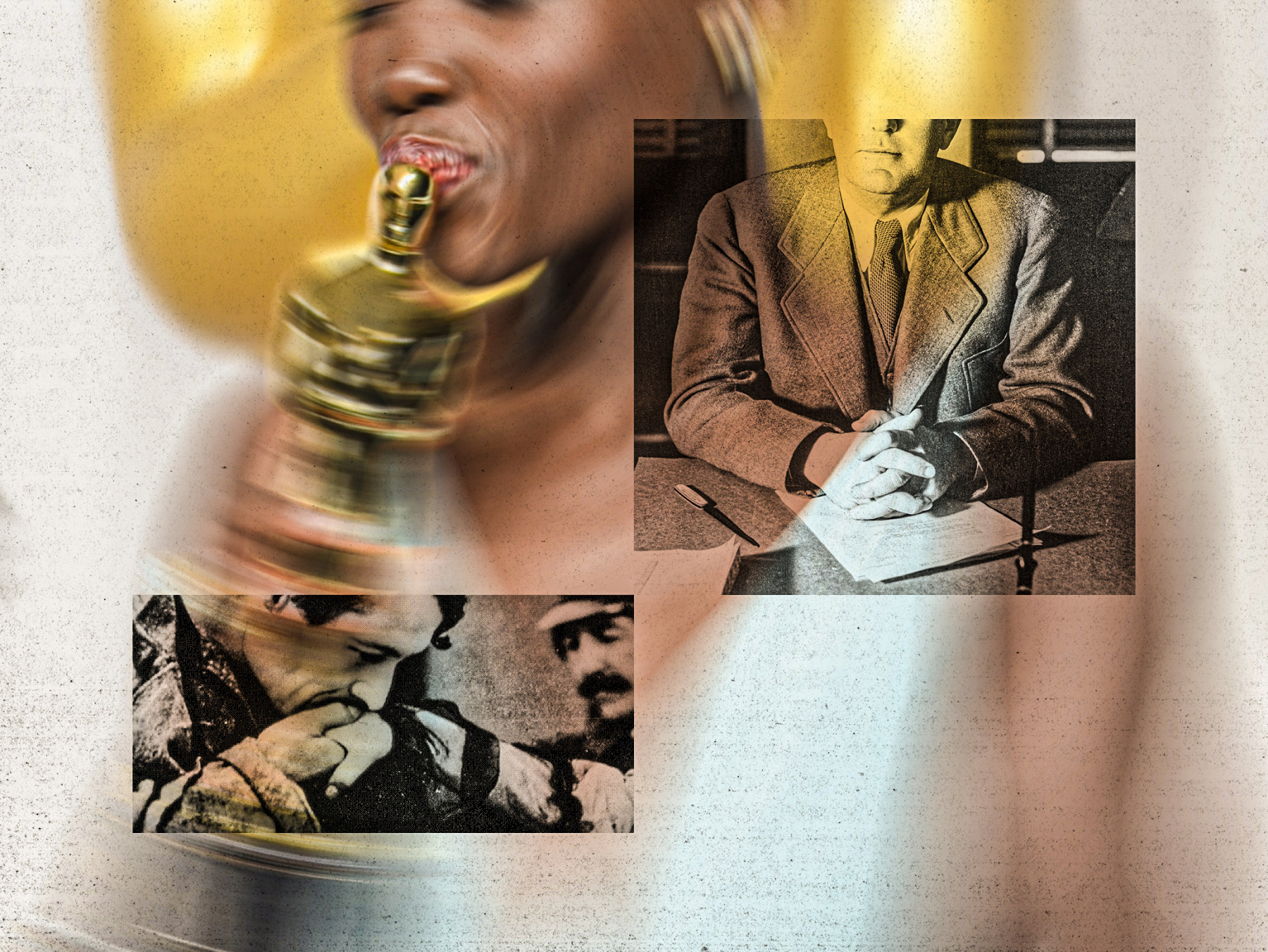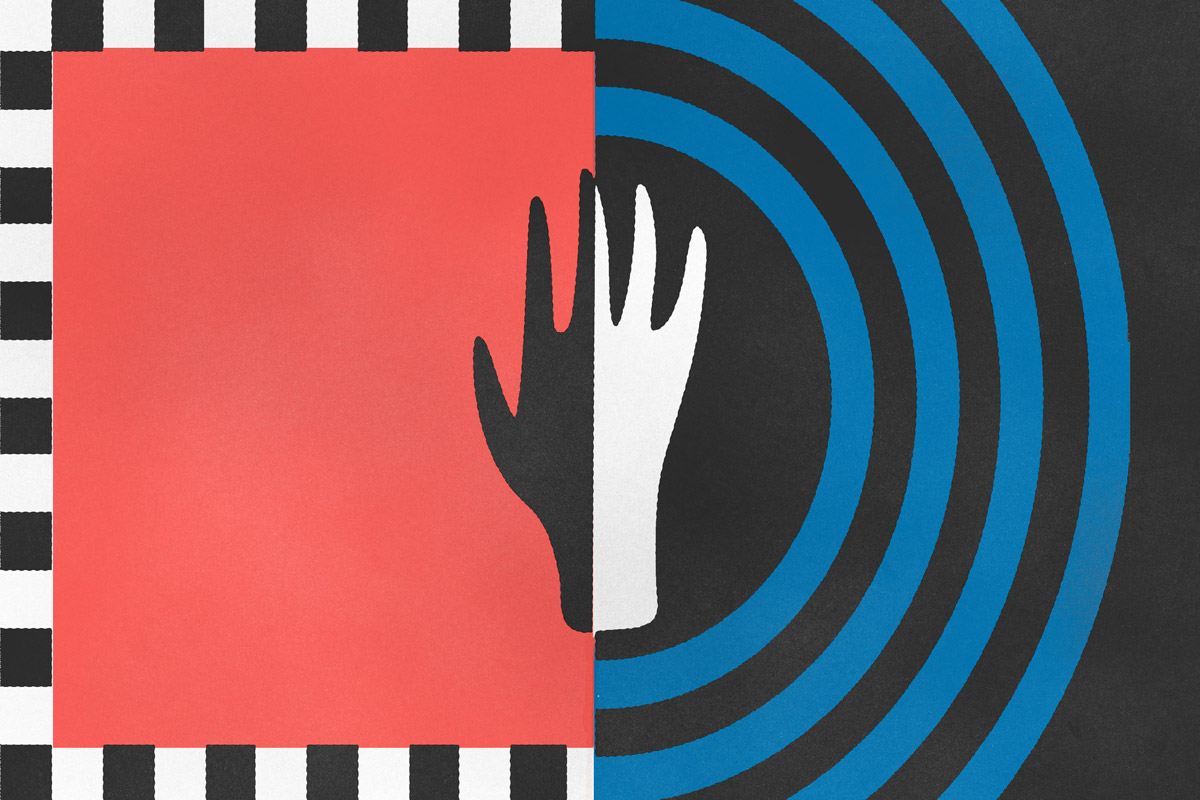“It is the innocence which constitutes the crime,” James Baldwin wrote in his 1963 essay titled “My Dungeon Shook”—an innocence that Baldwin understood only too well would continue distorting America’s racial reckoning well into the future. For ready confirmation of that core truth, we need look no further than today’s backlash against the teaching of America’s sordid racial past and present in our public schools. Published in The Fire Next Time, “My Dungeon Shook” speaks with an uncanny sharpness to our current political moment. In states across the country, bans on the teaching of critical race theory have gone hand-in-hand with book bans on literature addressing matters of race and sexual identity—both abiding concerns in Baldwin’s own work.
Indeed, in Pennsylvania, Central York High School has instituted a ban on the screening of I Am Not Your Negro, the 2016 documentary about Baldwin’s life and work—an action that prompted students at the majority-white school to dedicate a racial justice club to view it, and to read books that fell under the school district’s anti-CRT ban.
There’s a particularly painful irony in the banning of Baldwin and his thought in our schools, since a close reading of “My Dungeon Shook” as an indispensable guide to both the legacies of racial terror in the United States and the broad mobilizations of backlash politics to protect the myth of white innocence at all costs. The essay, in short, is a model of the sort of instruction that should be taking place in our classrooms if we are serious about owning up to the real and ongoing obligations of racial justice.
Baldwin’s work is a model of the sort of instruction that should be taking place in our classrooms if we are serious about owning up to the real and ongoing obligations of racial justice.
In a prescient dedication that seems to foreshadow our present era of verboten racial honesty in the schools, Baldwin subtitled the essay as a “Letter to My Nephew on the One Hundredth Anniversary of Emancipation.” And Baldwin clearly drew on his own painful coming-of-age in white America as he directly addressed the crisis his nephew was then living through: “Please try to be clear, dear James, through the storm which rages about your youthful head today,” Baldwin wrote. Across the pages of “My Dungeon Shook,” Baldwin proceeds to expertly refute the myths that children are too young to learn about race, and impervious in any event to the effects of racism in their own lives.
Over against such myths, Baldwin challenges his readers to engage directly and lucidly with the country’s actual racial history. Such forthrightness does not, of course, render the task at hand an easy one; indeed, at the outset of the essay, he revisits several earlier, unfinished efforts to complete the essay. But as soon as he begins, Baldwin takes his nephew—and by extension, his readers—on a poignant journey examining the intergenerational trauma of racism that connects him and his nephew to the history of slavery in America. He also underlines the many ways in which this history continues to disfigure and distort the promise of American democracy at the fraught moment of the civil rights movement’s push to realize substantive civil and socioeconomic equality for Black Americans.
Writing about his nephew’s father, Baldwin charts how the toxic legacies of American racism have haunted his family members from childhood into adulthood. Baldwin writes; “I hear in his present laughter his laughter as a child. Let him curse and I remember him falling down the cellar steps, and howling, and I remember, with pain, his tears, which my hand or your grandmother’s so easily wiped away. But no one’s hand can wipe away those tears he sheds invisibly today, which one hears in his laughter and in his speech and in his songs. I know what the world has done to my brother and how narrowly he has survived it.”
Most important, Baldwin emphasizes that white Americans are willfully blind to these all-too-plain legacies of the racial past and have no interest in understanding or engaging with them: “And I know, which is much worse, and this is the crime of which I accuse my countrymen, and for which neither I nor time nor history will ever forgive them, that they have destroyed and are destroying hundreds of thousands of lives and do not know it and do not want to know it.”
A common argument launched against the teaching of CRT, which began as a graduate-level movement in American law schools, comes from a long history of panic from the right concerning what themes kids should or should not be exposed to in schools. However, polling shows that parents of Black and other non-white students strongly support the teaching of CRT in schools once its core precepts are explained to them. An overwhelming 83 percent majority of Black parents support the teaching of CRT; 71 percent of Asian parents and 60 percent of Hispanic parents also back the use of CRT-related materials in schools. Yet the parents of Black and non- Black students of color are rarely granted prominent platforms in the cynically orchestrated right-wing furor over critical race theory. This is another vital reason why the testimony Baldwin offers in “My Dungeon Shook” is so vital—he directly channels the pain and socio-cultural isolation that’s so deeply rooted in the systemic racial oppression embedded so deeply in the American past. And he does so not only on behalf of his own and his brother’s generation, but also for his nephew’s—showcasing just how central the life experience of African Americans remains in the country’s ongoing quest for truly democratic and equitable self-realization.
This is all powerful and arresting material on its own terms—but “My Dungeon Shook” also speaks empathetically and perceptively to the white society lost in the self-inflicted myths of its own innocence. This act of compassionate instruction is what recommends Baldwin so urgently to present-day readers—and serves to further highlight why “My Dungeon Shook” belongs front-and-center in today’s schoolroom discussions of race.
Baldwin emphasizes that white Americans are willfully blind to these all-too-plain legacies of the racial past and have no interest in understanding or engaging with them.
As he works through the forbidding history of race in America, Baldwin deconstructs the all-too-common American reluctance to grapple with history. He writes:
Try to imagine how you would feel if you woke up one morning to find the sun shining and all the stars aflame. You would be frightened because it is out of the order of nature. Any upheaval in the universe is terrifying because it so profoundly attacks one’s sense of one’s own reality. Well, the black man has functioned in the white man’s world as a fixed star, as an immovable pillar, : and as he moves out of his place, heaven and earth are shaken to their foundations. . . . And if the word integration means anything, this is what it means, that we, with love, shall force our brothers to see themselves as they are, to cease fleeing from reality and begin to change it. . . . We cannot be free until they are free.
This “terrible paradox” that Baldwin describes between white and Black Americans mirrors the main thrust of one of CRT’s foundational arguments formulated by law professor Derrick Bell, called interest convergence. Bell argues that racial progress in America happens provisionally, when interests between Black and white Americans align—or when the American state might be embarrassed into bowing to limited demands for racial justice and equity. Correspondingly, Bell argued that racial progress declines when these interests bifurcate. Baldwin’s essay speaks to this convergence, by describing how white Americans must relinquish the myth of their own innocence surrounding the issue of racism in order to extend substantive freedom to all Americans. “We cannot be free, until they are free” is a crucial acknowledgment that the plight of Black America cannot be dismissed or downplayed in the struggle to realize the promise of democratic freedom.
We are, of course, very far from approaching any such moment in the recursive, dishonest and destructive pseudo-controversy over critical race theory in the schools. But here again, Baldwin gets right to the heart of the problem in “My Dungeon Shook.” “To act is to be committed,” he writes, “and to be committed is to be in danger.”
This danger continues to disfigure our core understanding of what racial justice is and should be—and the fierce white-led resistance to the genuine commitment to racial justice is what emerges out of the fear of that danger. This is why Baldwin’s essay is an exemplary text in the struggle to move beyond the fear-driven hijacking of our schools. It is a call for something more than an end to the myth of American “innocence” or a corrective to a quantitative lack of knowledge—it is a call, quite literally, as he writes in the final words of the essay, for freedom.
Sana Hashmi is a 2022 Summer Fellow at AAPF.



